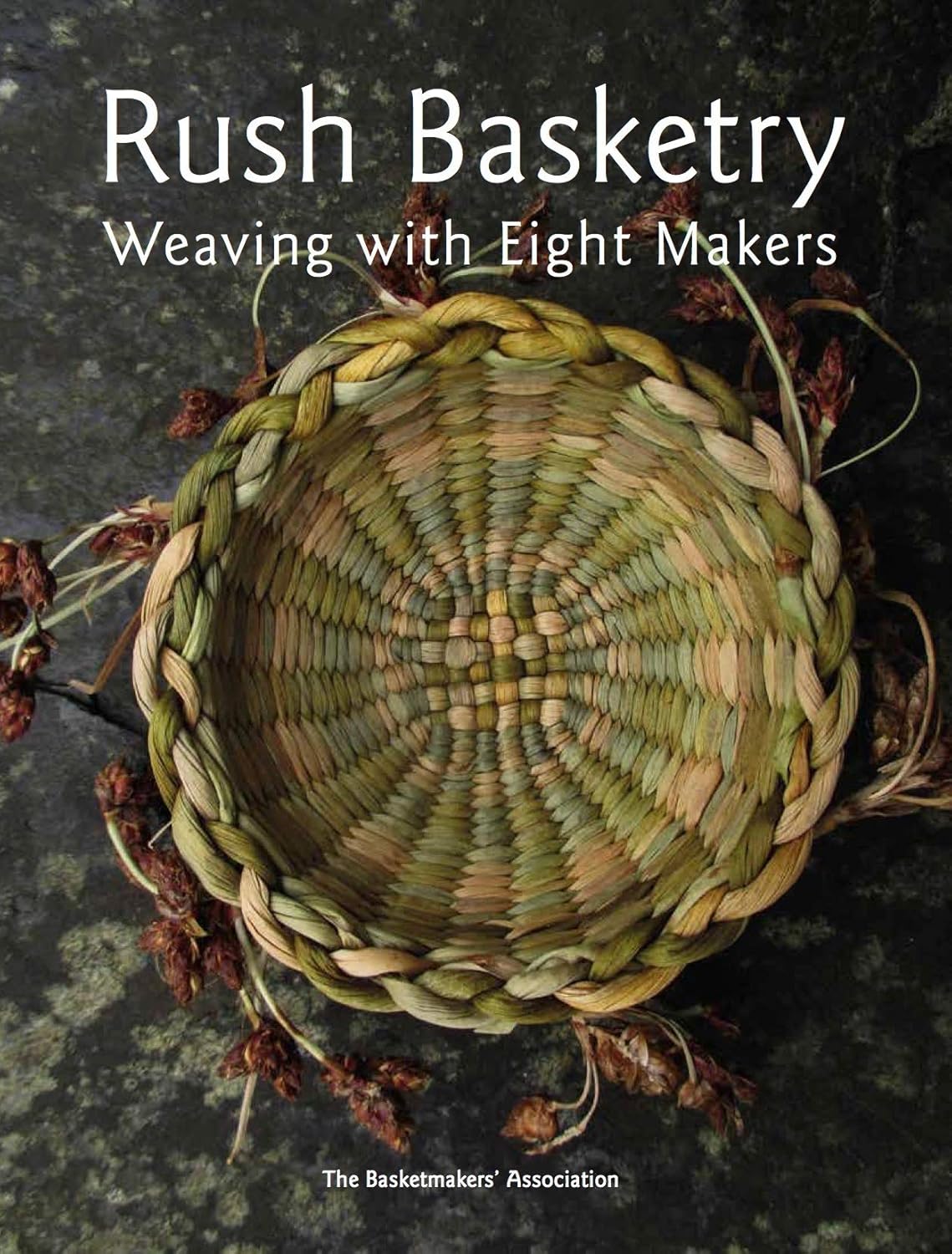About this deal
The course is suitable for complete beginners, those with basketmaking experience in other materials who want to try rush, and those who have done some rush basketmaking and wish to extend their skills. These three day workshops are created so that you can spend time working on a project of your choice. You may wish to improve on a technique by repeating a certain basket or weave or you could remake a favourite basket. If you are a beginner you can relax and weave at a slower pace on a traditional or contemporary basket. Intermediate or advanced weavers may wish to use the opportunity to try a more challenging technique. This course is suitable for intermediate and advanced students, for those who have experience working with wood as there is more splitting and shaving wood than weaving with willow. This basket would have been used by rural people to go to the market or by bourgeoise families for a picnic outing.
STRAW OVERSHOES made by Gillian Nott as part of a ‘handling’ set for the Imperial War museum (North) This course is suitable for complete beginners, those with basketmaking experience in other materials who want to try rush, and those who have done some rush basketmaking and wish to extend their skills. Choose a workshop and send an e mail to Sue at [email protected] (You cannot book workshops online). Rush was used to make baskets, chair seats, matting and mattresses in the past and there are still rush workers who keep alive these traditions particularly in East Anglia and Ireland. I began making objects from found, natural materials which I gathered on my wanderings. Each piece embodied a sense of the place, the plants and creatures there, the weather, my state of mind at the time. I continued with further creative explorations and craft training in basketry; I discovered experimental archaeology, how our ancient ancestors would have foraged all their material resources from the land around them. How they processed raw materials for pottery, metallurgy, buildings, textiles, basketry.Access to basic materials and resources are available as part of this course. Please bring a book for note-taking. If you have one, a camera might be useful for recording progress, samples & other students’ work. When I've finished, what course can I do next? Plants are integral to reweaving the connection between land and people. A place becomes a home when it sustains you, when it feeds you in body as well as spirit.’ I made this basket in my workshop in 2010, it took around 90 to 100 hours. This type of basket would be used by fishermen. Great Britain has a long tradition of basket making and techniques we use today were developed thousands of years ago.
Clothes are draped over the top and a pot of incense placed in the middle to fumigate them; a perfect dry cleaning process and the clothes must smell wonderful afterwards. Incense burner from neighbouring Salalah in Dohar. Leaves such as iris, crocosmia, daffodil, daylily, gladiolus, flax, cordyline are all suitable – cut them long and hang them up in bunches by the tip ends somewhere airy to dry. Most workshops have 6 students. Some of our tutors have kindly offered to teach 8 students, this helps with the running costs of workshops, especially for tutors who have travelled long distances. We try to keep the cost of workshops affordable, but have had to increase our fees this year. The Tuesday classes offer a discount to students who book three classes in a row.This will be quite an intensive course and will suit those with some basketmaking experience wishing to extend their skills. Here in the UK we have the traditional use of a number of plants for basketmaking: willow rods; woods such as ash, oak, hazel, chestnut, which are split and woven; rush; grasses; roots; bark. Over time many of these plants have been cultivated and managed, to provide a reliable and steady supply of materials, resulting in coppiced woodland, rush bed management, osier beds. These are full size replicas of the work of Angus McPhee, grass weaver. He lived on South Uist, Scotland, but for 50 years of his life was an inpatient at Craig Dunain psychiatric hospital in Inverness. He chose not to speak, instead he made garments from grass and leaves growing in the hospital grounds, twisting the plants into a rope or simmans, a traditional technique he would have learnt at home as a young crofter. Joyce Laing championed his ‘outsider art’ and Joanne made replica garments for the production of ‘Angus’ by the Horse and Bamboo theatre group. This way of relating to the plants brings a sense of connection and intimacy, a feeling of belonging in this place. I abide by the precept of the ‘Honourable Harvest’ that Robin Wall Klimmerer describes in her book Braiding Sweetgrass: This course will teach flat plaiting methods using 3, 5, or 7 end plaits. The first day will be spent making a length of plait and the second sewing it into an open basket or tray. At the end of the course, you will have a basket to take home.
This course is suitable for intermediate and advanced students, beginners may find this challenging, not suitable for complete beginners.This course is suitable for advanced and intermediate students with experience with knife work, not suitable for beginners.
 Great Deal
Great Deal 